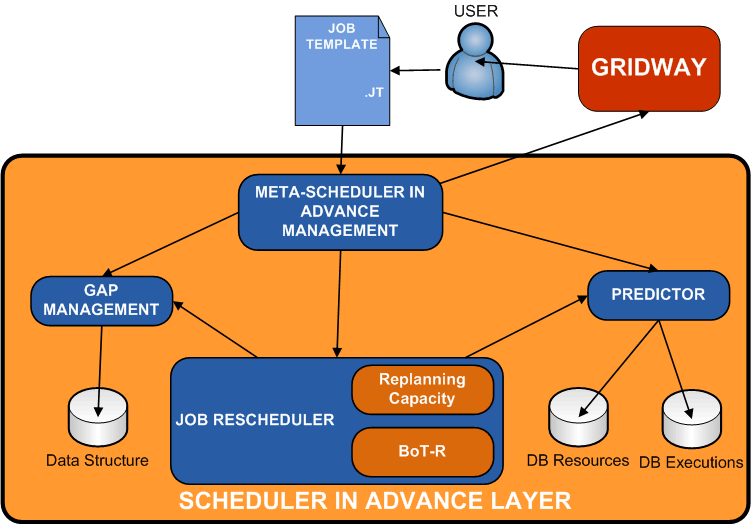
| SA-Layer Meta-Scheduler |
Grids are made of heterogeneous computing resources geographically dispersed where providing QoS is a challenging task. One way of enhancing the QoS perceived by users is by performing scheduling of jobs in advance, since reservations of resources are not always possible. In this way, it becomes more likely that the appropriate resources are available to run the job when needed. However, as resources in Grid environments may be shared among Grid users and local users, monitoring and prediction techniques are needed to estimate future durations of jobs. The SA-Layer is a meta-scheduling framework designed by the GridCloud team at the I3A (UCLM) to provide the functionality needed to perform meta-scheduling of jobs in advance, which means that scheduling decisions are performed some time before jobs are actually executed. To this end:
The main aim of SA-Layer is to ensure resource availability for future job executions and to provide QoS to end-users in terms of finished jobs fulfilling deadlines. |


